
The Battle of Valmy, also known as the Cannonade of Valmy, was the first major victory by the army of France during the Revolutionary Wars that followed the French Revolution. The battle took place on 20 September 1792 as Prussian troops commanded by the Duke of Brunswick attempted to march on Paris. Generals François Kellermann and Charles Dumouriez stopped the advance near the northern village of Valmy in Champagne-Ardenne.

The post mill is the earliest type of European windmill. Its defining feature is that the whole body of the mill that houses the machinery is mounted on a single vertical post, around which it can be turned to bring the sails into the wind. All post mills have an arm projecting from them on the side opposite the sails and reaching down to near ground level. With some, as at Saxtead Green, the arm carries a fantail to turn the mill automatically. With the others the arm serves to rotate the mill into the wind by hand.

Durrington or High Salvington Windmill is a Grade II listed post mill in High Salvington, Sussex that has been restored and is in full working order. The mill stands 320 feet (98 m) above sea level and is able to take advantage of incoming sea winds.
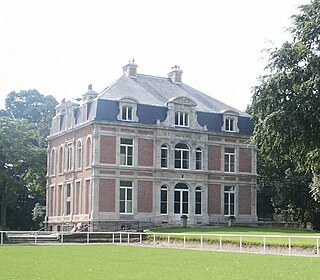
Templeuve-en-Pévèle, formerly Templeuve, is a commune in the Nord department in northern France.

Candas is a commune in the Somme department in Hauts-de-France in northern France.
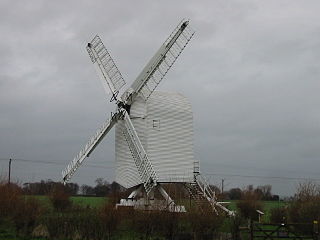
Chillenden windmill is a grade II* listed open-trestle post mill north of Chillenden, Kent, England. It is the last post mill built in Kent.
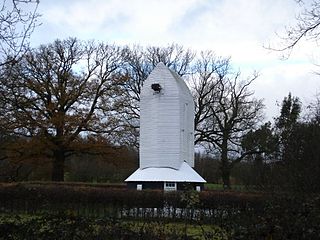
Lowfield Heath Windmill is a grade II listed post mill at Charlwood, Surrey, England which has been restored to working order.

Pakenham Mill is a Grade II* listed tower mill at Pakenham, Suffolk, England which has been restored and is maintained in working order.

Cromer Windmill, restored in four stages between 1967 and 1998, is a Grade II* listed post mill at Cromer, Ardeley, Hertfordshire, England.

Garboldisham Mill is a Grade II* listed post mill at Garboldisham, Norfolk, that has been restored.

Albertdina is a smock mill in Noord-Sleen, Netherlands. It was built in 1906 and is listed as a Rijksmonument, number 33783.
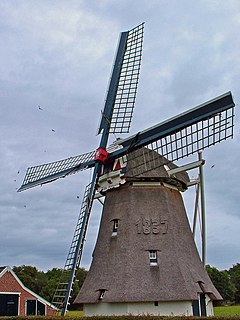
De Zwaluw is a smock mill in Oudemolen, Drenthe, the Netherlands. It was built in 1837 and is listed as a Rijksmonument, number 38148.

Windlust is a smock mill in Burum, Friesland, Netherlands which was built in 2014, replacing an earlier mill that had burnt down on 8 April 2012.
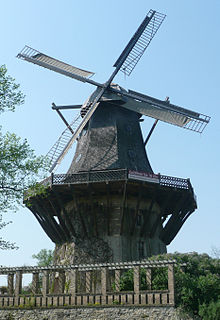
The Historic Mill of Sanssouci is a mill in Potsdam, Germany. Thanks to the legend of The Miller of Sanssouci, the Mill became famous, particularly due to its association with Frederick the Great and his summer palace of Sanssouci.

The Pointe-Claire Windmill is a windmill in Pointe-Claire, Quebec, Canada. It is the oldest windmill on the island of Montreal and one of 18 remaining windmills in Quebec.
Jersey has had a number of windmills over the centuries. They were mostly corn mills, and about half of those built survive in one form or another.

De Akkermolen is a 17th-century windmill in Zundert, Netherlands. Built around 1605 to replace an earlier windmill, it was used as a gristmill until it was severely damaged in 1950. The mill was bought by the local government and restored in 1961, and it was listed as a national heritage site in 1974.

Huizermolen is a post mill in the Netherlands Open Air Museum, Arnhem, Netherlands which was built in 1919 and is in working order.

The Moulin de Vertain, also known as the Moulin Blanc and the Moulin de Briques is a unique windmill in Templeuve-en-Pévèle, Nord, France which was built in the late 15th century and has been restored to working order. Although it looks like a tower mill externally, it is technically akin to a post mill in internal construction and operation.





















